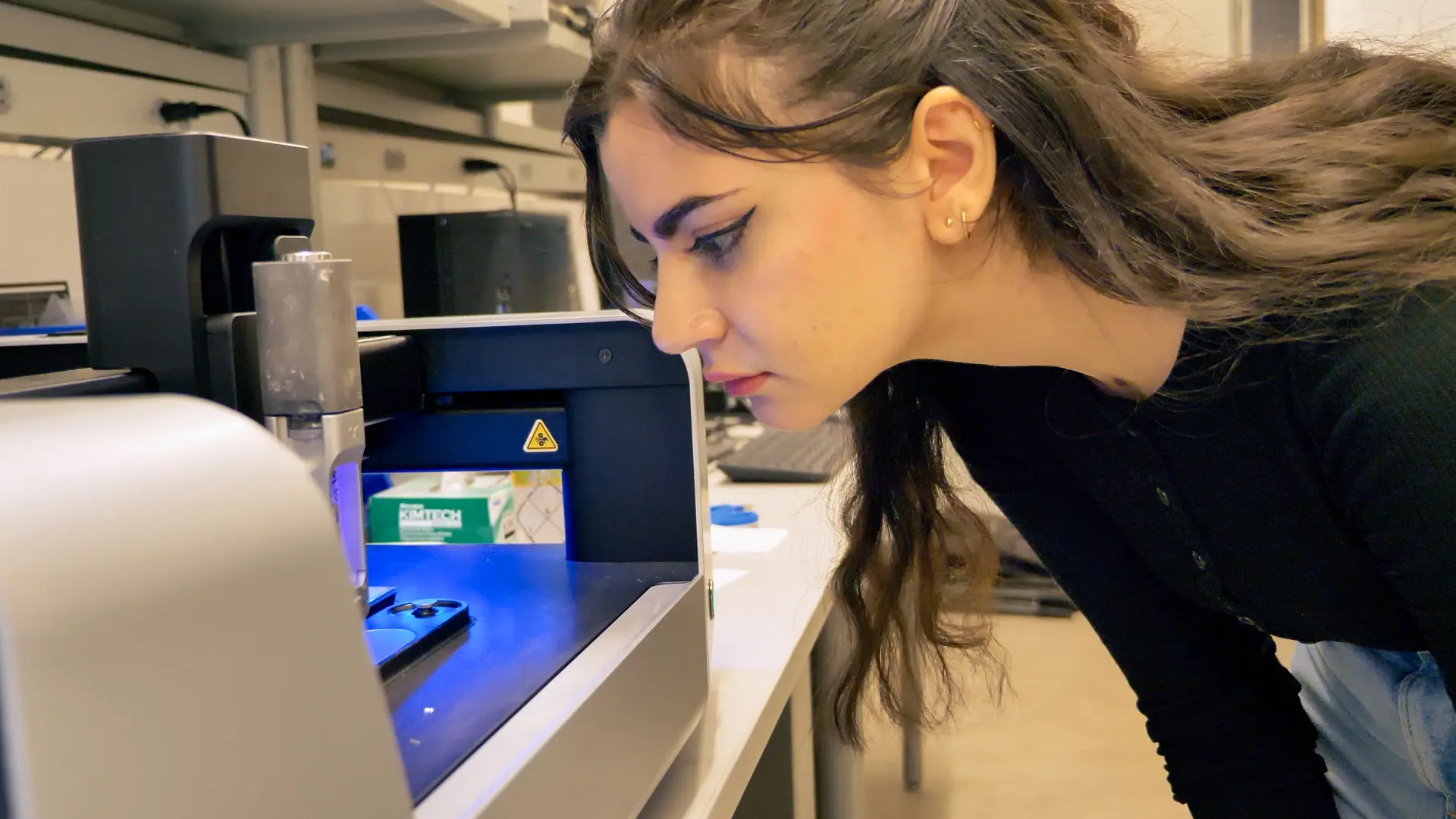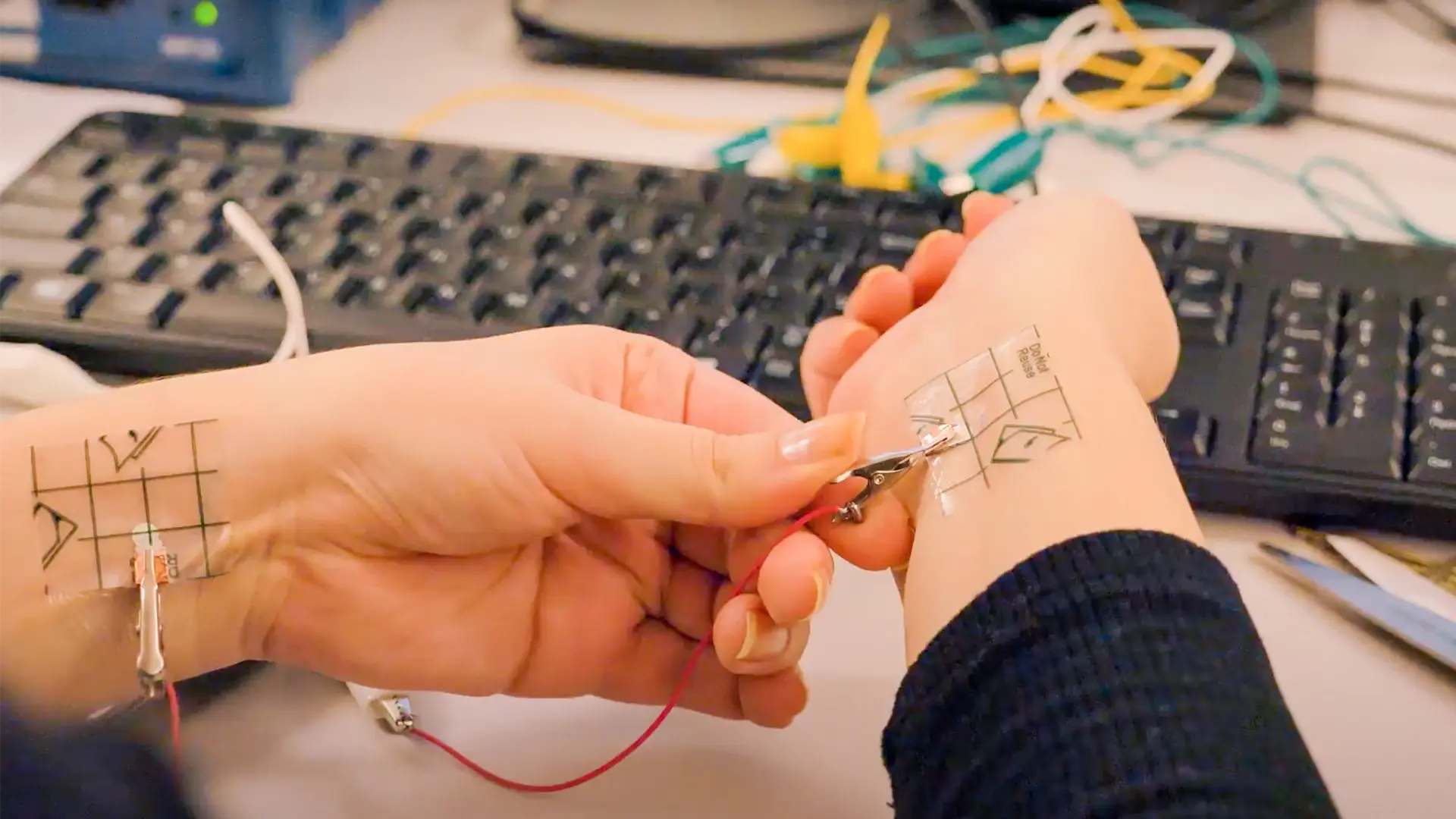Advancing Printed Sensors: RFID Tag for Breath Monitoring
Sensors are everywhere — these clever electronic devices detect and respond to changes in the environment, turning physical, chemical, or biological information into measurable signals. From smart watches to medical devices, they’re shaping the future of technology.
And that future is growing fast. According to IDTechEx, the printed sensor market was valued at USD $421 million in 2024 and is expected to grow at 8.6% annually through 2034. One area driving this growth is biosensors, which are gaining momentum thanks to the rising prevalence of chronic diseases like diabetes and cardiovascular disorders.
At Voltera, we’re right in the middle of this exciting space, pushing the boundaries of printed electronics. Biosensors are a particular focus for us, and we’ve been working on some exciting projects, including:
- Gold electrocardiogram (ECG) electrodes
- Ultra-high frequency (UHF) radio frequency identification (RFID) tag
- Stretchable strain gauges
But it’s not just us driving innovation. Our customers are constantly inspiring us with their work. For example, researchers from Universitat Politècnica de Catalunya in Spain recently developed a biosensor using our NOVA materials dispensing system and published their findings in Electronics [1]. It’s research like this that keeps us excited about the future of sensor technology.
Developing a stretchable respiration sensor
The research team aimed to develop a wearable sensor to track inspiration (the process of inhaling air into the lungs) and expiration (the process of exhaling air out of the lungs) cycles. The sensor consists of three key components:
- A UHF RFID tag
- A copper strip
- An adhesive belt
Sensor design
The RFID tag features two non-symmetrical meander dipoles with a central loop that connects to the UHF RFID chip. This asymmetric design enhances sensitivity to displacement variations (Δ𝑑), making it well-suited for respiration monitoring.
During testing, the sensor was integrated into an elastic belt and worn around the abdominal region, allowing it to detect breathing by monitoring changes in the relative position of the copper strip and RFID tag during respiration.
Printing the RFID tag
The RFID tag was printed using NOVA with ACI FS0142A silver conductive ink on a 0.2 mm thick Kapton (polyimide) substrate, chosen for its flexibility and durability.
The NOVA software, which supports Gerber files from any ECAD software, automatically generated toolpaths to dispense the conductive ink onto the designated area. After printing, the tag was cured at 40°C for 20 minutes to ensure optimal electrical performance while maintaining flexibility for wearable applications.
Sensor operation
The sensor functions through mutual inductive coupling between the printed RFID tag and the copper strip. Changes in displacement (Δ𝑑) during respiration modulate the tag impedance, which affects power transmission efficiency, and the transmission coefficient, which influences the backscattered signal strength received by the reader.
Results
Experimental results demonstrated a 9 dB reduction in the received signal strength indicator (RSSI) and a 2.3 m decrease in read range within the first 12 mm of displacement. In addition, the sensor successfully tracked respiratory cycles, showing an approximate 5 dB variation between inspiration and expiration phases when worn around the abdominal region.
Conclusion
The study validated the sensor’s potential for remote patient monitoring as a cost-effective, battery-free solution. Its lightweight, flexible design enables seamless integration into wearable applications, providing real-time respiratory tracking without bulky or invasive equipment.
Want to see how NOVA can support your next big idea? Contact us today! And if you're curious about this, or other projects completed using NOVA, don’t forget to subscribe to our newsletter.
Reference
[1] Hussain, T., Gil, I., & Fernández-García, R. (2025). Wearable Displacement Sensor Using Inductive Coupling of Printed RFID Tag with Metallic Strip. Electronics, 14(2), 262. https://doi.org/10.3390/electronics14020262.

Check out our Customer Stories
Take a closer look at what our customers are doing in the industry.




